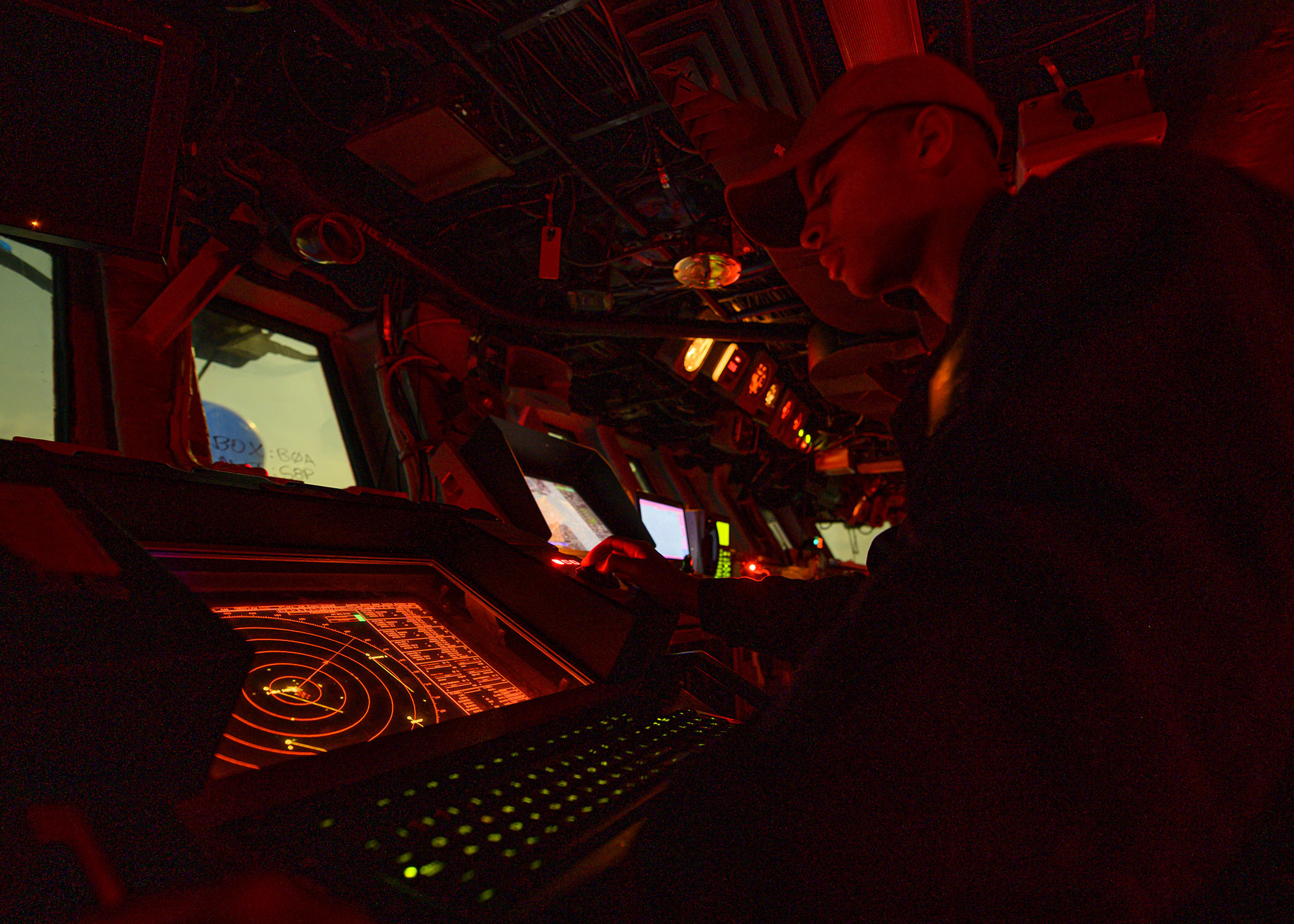
ANNAPOLIS, Md. – The Navy and Marine Corps are busy figuring out what they do – and don’t – need to buy to support their emerging operational concepts for high-end warfare.
Working rapidly to inform the next budget cycle, planners for both services are looking at how to network their systems together, how to sustain forces spread out across large areas and how to impose significant cost on the adversary while operating in that wide space – and how to do so affordably – to support the Navy’s Distributed Maritime Operations and Marine’s Littoral Operations in a Contested Environment concepts.
“[DMO] at a simple level, it’s the ability to distribute your forces and then concentrate effects at a time and place of your choosing,” Vice Adm. Jim Kilby, the deputy chief of naval operations for warfighting requirements and capabilities (OPNAV N9) said on Tuesday during NDIA’s expeditionary warfare conference.
The Navy and Marine Corps have developed a “Maritime Fight Brief” that outlines how applying DMO and LOCE would play out in actual operations, and how the naval force would distribute and concentrate power. While most of the details are classified, Kilby noted that investments would change in the near-term to create more commonality and integration among systems that could be used together in the surface domain, for example, or the air domain.
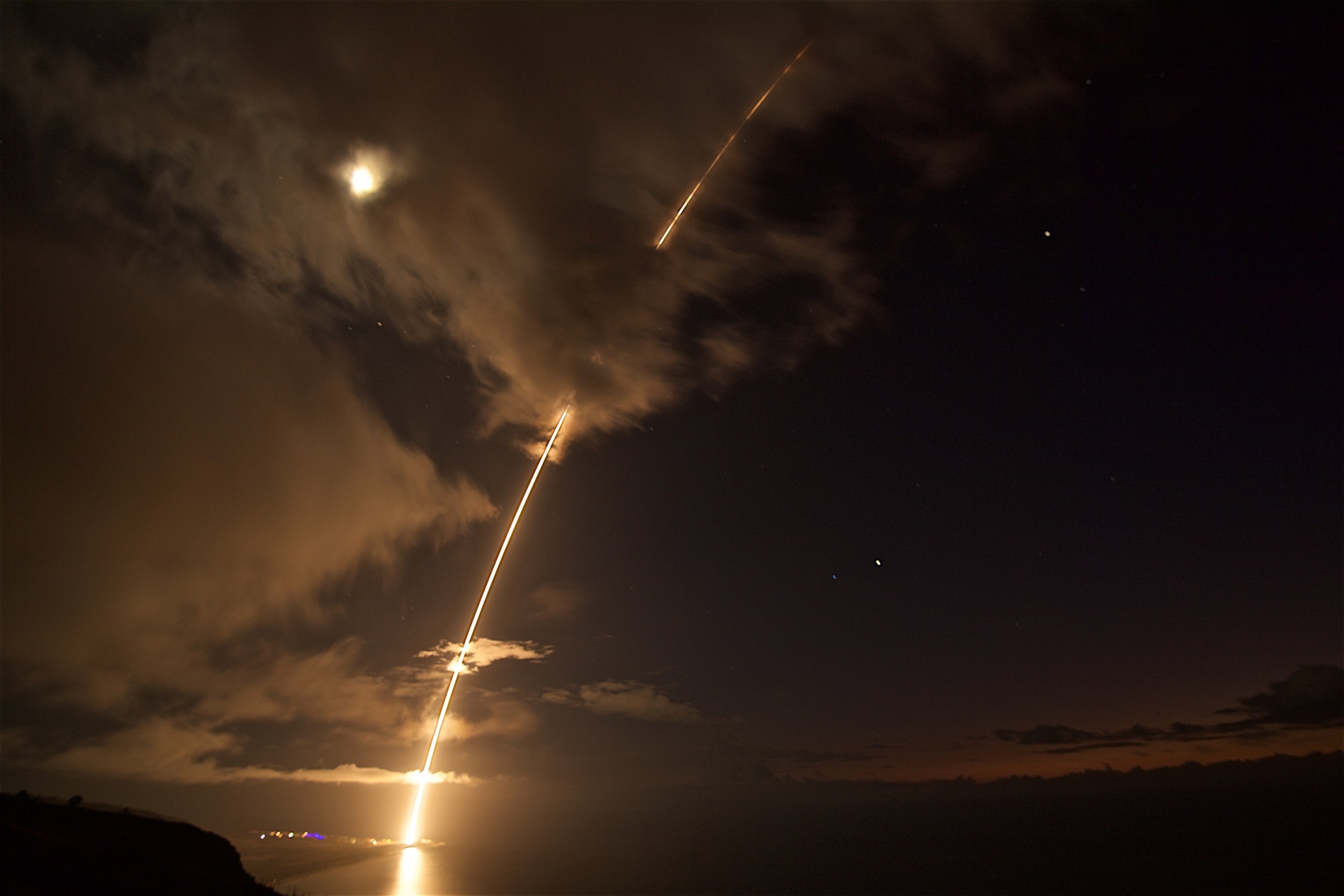
He cited the Naval Integrated Fire Control-Counter Air (NIFC-CA) construct as an example of what the Navy has already done internally. The Standard Missile-6, Cooperative Engagement Capability, Aegis Baseline 9 guided-missile cruiser and the E-2D Advanced Hawkeye aircraft all have different program managers and resource sponsors but need to remain aligned, he said. But now, he wants to bring the Marine Corps into this construct, and perhaps even the Army or Air Force.
“We want to continue to make [NIFC-CA] more robust and bring those effects to bear with multiple sensors, multiple weapons, multiple platforms,” he said.
That doesn’t come naturally for program managers and resource sponsors, who seek the most effective and cost-efficient way to achieve ends and aren’t incentivized to compromise on their requirements for the sake of commonality or integration with others, Kilby said.
“So you’ll see a pressurization to do that,” he said.
Kilby told USNI News that he was committed to keeping Navy and Marine programs aligned so they can increase interoperability – Marine Corps aircraft flying off Navy flight decks, or Marine weapons engaging targets at sea while aboard Navy ships – while involving program managers and resource sponsors from two services.
Asked specifically if Marine Corps aircraft, weapons and sensors would be brought into NIFC-CA, Kilby said yes.
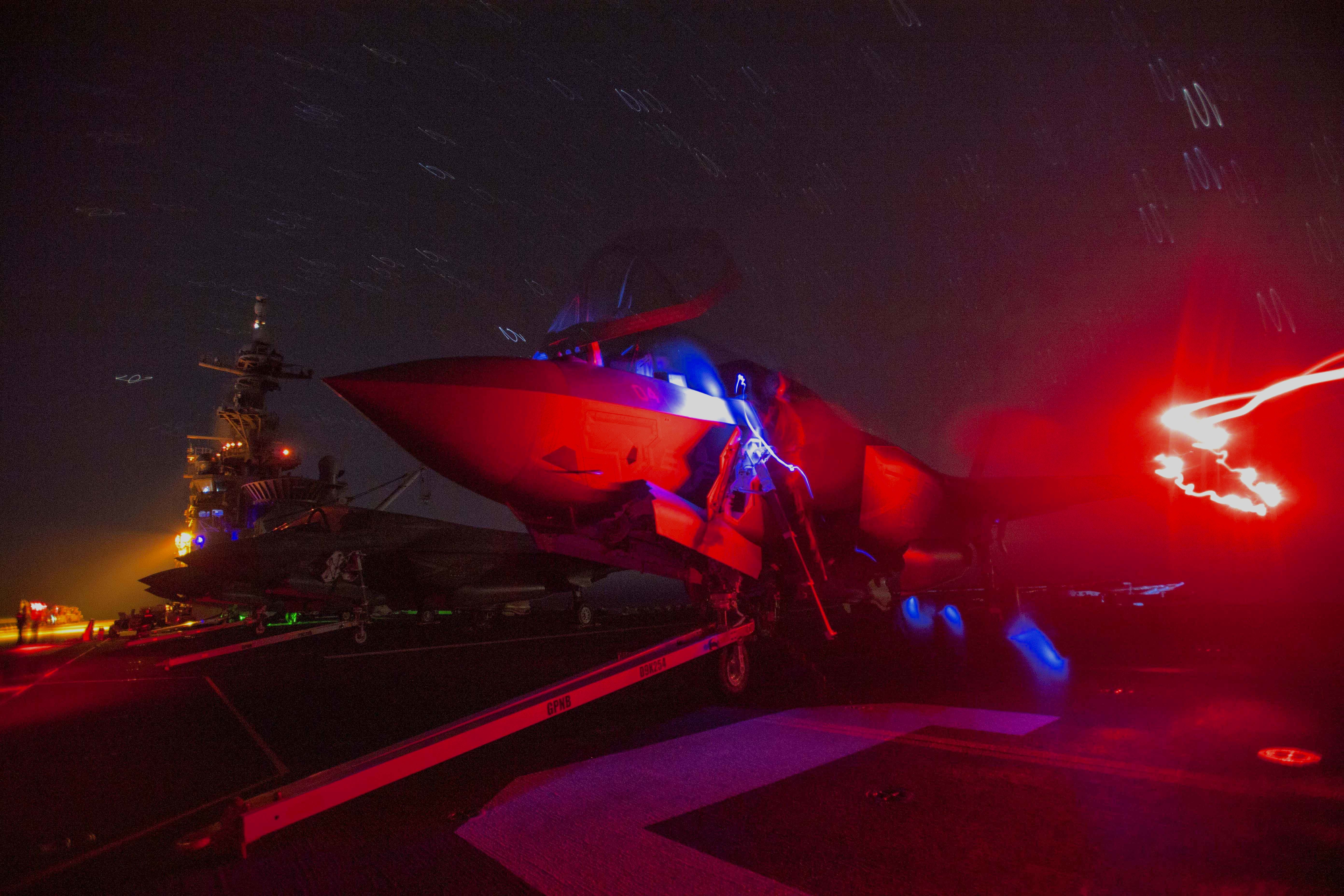
“My view: … It would be the same (network). Just like I don’t want a separate integrated fire network with Japan; I want one integrated fire network where all the systems snap into that same standard. And that’s a challenge for us because our requirements process isn’t generated to do that; it usually generates a requirement that is satisfied by a single resource sponsor and a single program manager, so we’ve got to kind of up our game here,” he said.
Lt. Gen. Eric Smith, the deputy commandant of the Marine Corps for combat development and integration, told USNI News that the Navy and Marine Corps are already integrated in this way when it comes to cyber, for example, and said he and Kilby would have to do the same on other acquisition efforts. If Kilby tells him to adapt to a certain interface to plug into NIFC-CA, Smith said his answer needs to be yes unless there’s a pressing reason to have a different interface that compromises interoperability.
“What we don’t want to do is, Lockheed, Boeing, Harris, whoever, I need you to split your resources and do two different things. That’s a niche market: that drives cost up, [average procurement unit cost]; that drives timelines longer; and it’s just unwise if we’re going to be naval,” Smith said.
Naval Integrated Force Structure Assessment
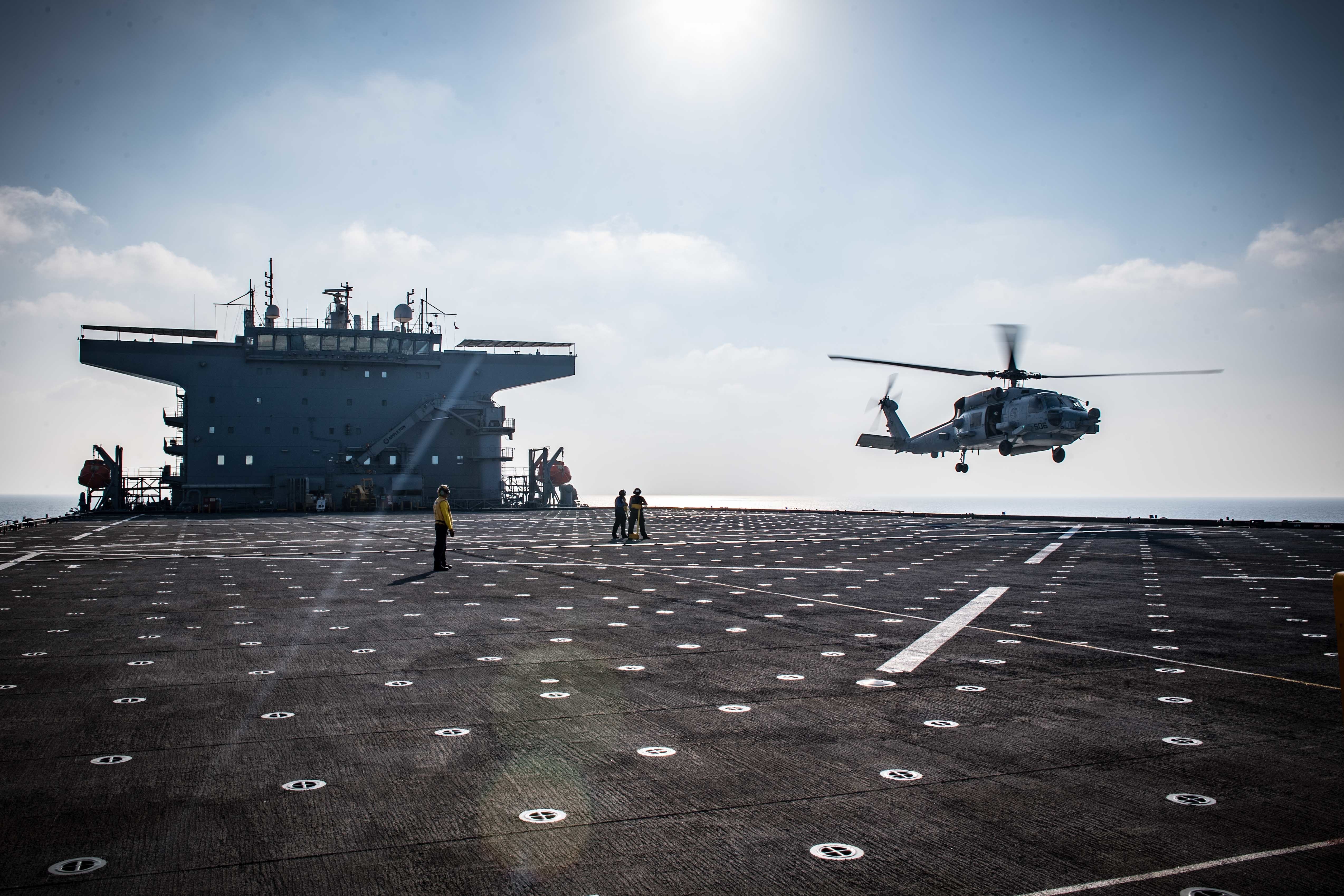
As the two services build their future fleets together, they are embarking on an effort to budget in parallel and develop an integrated force structure assessment (FSA) that will inform both their budget plans.
Previous FSAs conducted by assessment division of the chief of naval operations’ staff (OPNAV N81) cherry-picked Marine Corps capabilities they wanted to include that provided a benefit to the naval fleet, and used them in wargaming to inform shipbuilding plans and budgets. For the first time, this naval integrated FSA (NIFSA) will reflect the full gamut of Marine Corps contributions and needs and produce a product that represents the full cost and capability of the integrated naval force. The NIFSA will also for the first time include new capabilities that the services need to rapidly incorporate, such as unmanned systems and connectors to support the Marine Corps’ Expeditionary Advance Base Operations concept, which falls under LOCE, rather than only include programs of record already in the fleet.
By the end of this month the Navy and Marine Corps will have detailed definitions of the new capabilities they want to have included in the NIFSA. This means defining how many vertical launching cells the Large Unmanned Surface Vehicle will have, for example, and what the composition of an expeditionary advance base will be for each of several possible EAB mission sets.
“People have, I think, misconstrued EABO as one thing. … EABO has multiple forms: there’s strike, there’s sensing, there’s [electronic warfare], there is reconnaissance, there’s forward arming and refueling. So the size of an EAB, an expeditionary advance base, which is very temporary – go in, grab something, and then move or leave – they could be 40 Marines, it could be much larger than that if we had to do a significant refueling operation. It’s all going to be threat-dependent. But that’s what EAB is, and we’re going after and procuring things that will assist us in doing that,” Smith said during his presentation with Kilby.

Afterwards to reporters, he added that these definitions – to include how many Marines, how many enablers like corpsmen or communicators were included, what gear they carry and more – will be finessed during fleet experiments and exercises, but these initial definitions would help inform the NIFSA and Fiscal Year 2021 budget planning.
OPNAV N81 will then take these definitions and wargame them to inform the NIFSA, due out in December.
While Kilby and Smith said it was too early to have any concrete decisions about how DMO and LOCE will affect specific acquisition programs, they noted a couple lines of discussion.
First is intratheater lift, or moving Marines and goods around within a theater. Kilby said they were still working to understand what these connectors might look like: would they need to be fast above all else, or would it be more important for them to blend in with local shipping traffic?
The Pentagon’s Cost Assessment and Program Evaluation (CAPE) office had done some early studies with an alternate ship design that was not complex or particularly integrated with the rest of the force, but it did effectively move Marines from one expeditionary advance base to another, he said.
Cost-Imposition

Smith and Kilby both said imposing cost on an enemy was a key part of LOCE and DMO, even if it means the Navy and Marines spend a little more money on their end, too.
“It’s all about spreading an adversary out. You don’t have to cover four ports; you have to cover 15 ports now,” Smith said.
“Hiding in plain sight. We can use decoys. We can look like everything else. We can deploy decoys so it appears that there are 20 when in fact there are only five. Those are the kinds of things that are relatively inexpensive to invest in. I’m not interested in, frankly, on the Marine Corps side, in buying any system that doesn’t come with a decoy that looks like it, mimics it, that I can leave behind and is relatively inexpensive – because that’s cost-imposition, and that’s what we have to do.”
This cost-imposition strategy is driving the Marines’ interest in long-range unmanned surface vehicles to supplement their movement of people and goods around a theater.
Based on the results of a classified study with MITRE, Smith said, the service learned a couple small USVs could pose a major challenge to China, for example, with minimal risk to the Marine Corps.
“If you can produce something that is a thousand-mile vessel, that’s truly autonomous, that can carry the cargo that I need to sustain myself. And so I lose it – this goes back to, I don’t want to be efficient, I want to be effective; if the vessel itself is cheap enough that I can put three of them out there, and I just need one of them to get to me, well that’s terribly inefficient, but it’s super effective because we’re going to do cost-imposition. And if you’re the adversary, well I guess you’re going to need to target all three,” the general said.
“So I hope you bought enough DF-XXs [Chinese anti-ship weapons] because I’m going to try to spread you out. That I don’t mind saying publicly. So long-range unmanned surface vessels, for us, vitally important because they’re lethal. They’re not just connectors; they’re sniffers, they’re out there telling me what’s going on, they’re passing that information back to me, and they’re spreading out the enemy because at some point you’ve got to target everything that moves because the one thing that does get through is carrying the lethal package” to help the Marines achieve their aims.
Kilby acknowledged that some lawmakers may be hesitant about USVs despite the Navy and Marine Corps enthusiasm about the unproved technology. But he described an incremental plan to prove out the capabilities and gain confidence and support from those who control the coffers.

Today, Kilby said, the Navy is still proving that its medium and large USVs can operate autonomously while following the rules of the road and not running into other ships and obstacles at sea. That capability may be enough for now, though, if sensors or decoys could be added to USVs simply moving from point to point.
“Let’s take the first instantiation: it may be going from Point A to Point B, which we’re working on now, not hitting anything, following COLREGs, rules of the road. Well, that can serve a number of purposes from a deception perspective, so if I can satisfy that, then maybe these platforms can do that and I can add capability to them as I prove out that test plan,” he said.
“It’s a little bit like Aegis BMD has done over the past 15 years, where they: can I track a ballistic missile? Yes. Can I track two ballistic missiles? Yes. Can I shoot a ballistic missile now? Yes. Can I track a ballistic missile and a cruise missile at the same time? Yes. Can I track a ballistic missile and shoot down a cruise missile? It’s this iterative expansion of the capability area that I think we need to lay out in the unmanned world.”
Cost-Avoidance
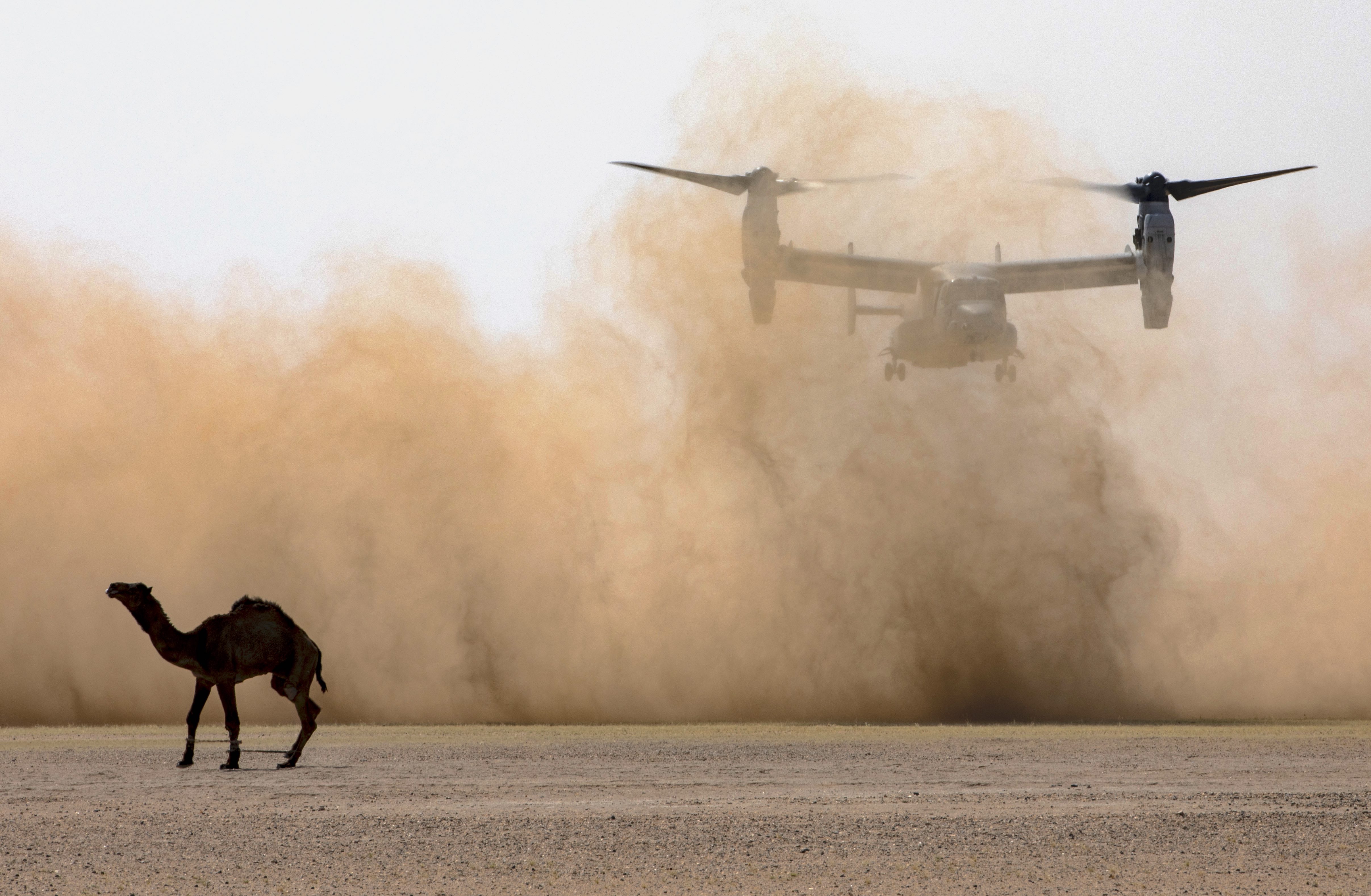
The Marine Corps is keenly aware that, while it can provide a lot to the Navy under DMO and LOCE, such as fighting at sea and providing sea control from the shore, the new concepts also place more of a burden on the Navy to keep Marines mobile and hopping from EAB to EAB.
Smith said there’s a concerted effort to minimize that burden.
In other words, what can the Marine Corps do today so the Navy doesn’t have to buy more connectors tomorrow?
“Things that we’re looking for: it’s not just about how do I bring additional supplies to that (distributed EABO) force; how does that force need less, so that they have less that needs to be brought to them? Can I make my own water? My own food? Can I make my own gas? And I can tell you, we do have capabilities to turn bad gas into good gas, we just experimented with that in the Philippines last year when I was at III MEF,” Smith said.
The more the Marine Corps can sustain itself ashore, even in small and temporary bases, the less the Navy will have to drive ships and connectors around the littorals, and the fewer connectors the Navy will have to buy overall.
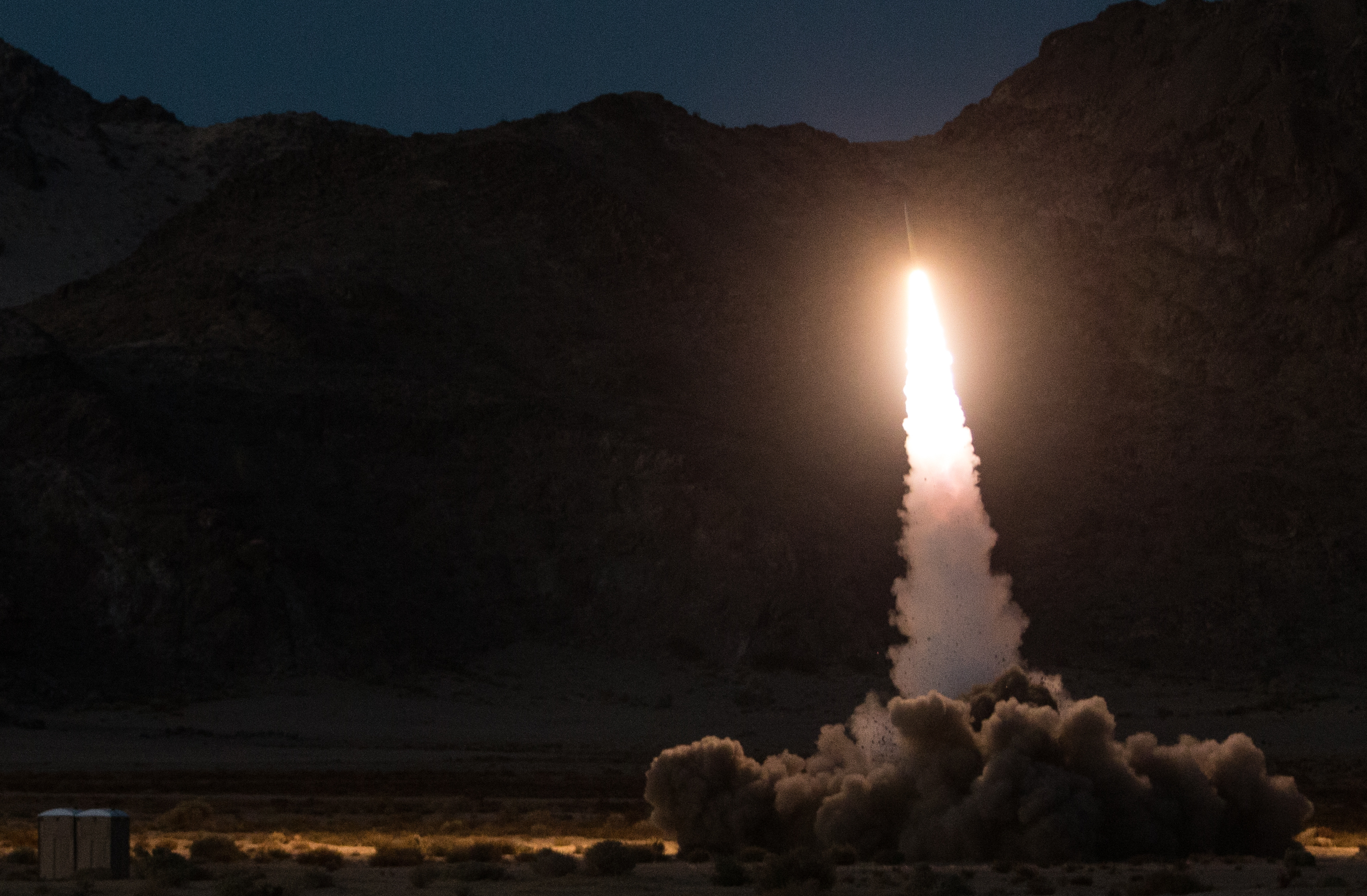
“What we’re interested in is not placing a burden on our shipmates,” the general said.
This mentality even applies to medical care and casualty evacuation capability, he added.
“We’re working on things that will allow casualty care to happen forward. So, okay, you’ve got a gunshot wound or a shrapnel wound? Okay. Then if it’s not life, limb or eyesight, then you might not be evacuated for a couple three, four days. And that is possible – we have become used to, in Iraq and Afghanistan, you’re never more than 15 minutes from an evac. You don’t have to be evacuated for a gunshot wound, I can tell you, and you can hold for quite a while, everybody just hold tight, if we have the proper training, the proper equipment, if we have no-refrigeration-needed blood products,” Smith said.
“Those things then put less of a burden on our shipmates, if I can build my own gas, my own chow, my own water. … I can hold for three, four, five days before I have to evac a casualty. Those things actually are the game-changers; otherwise you’re just buying more connectors, which cost a lot of money.”





